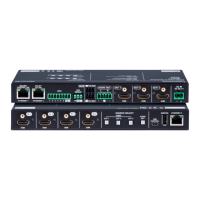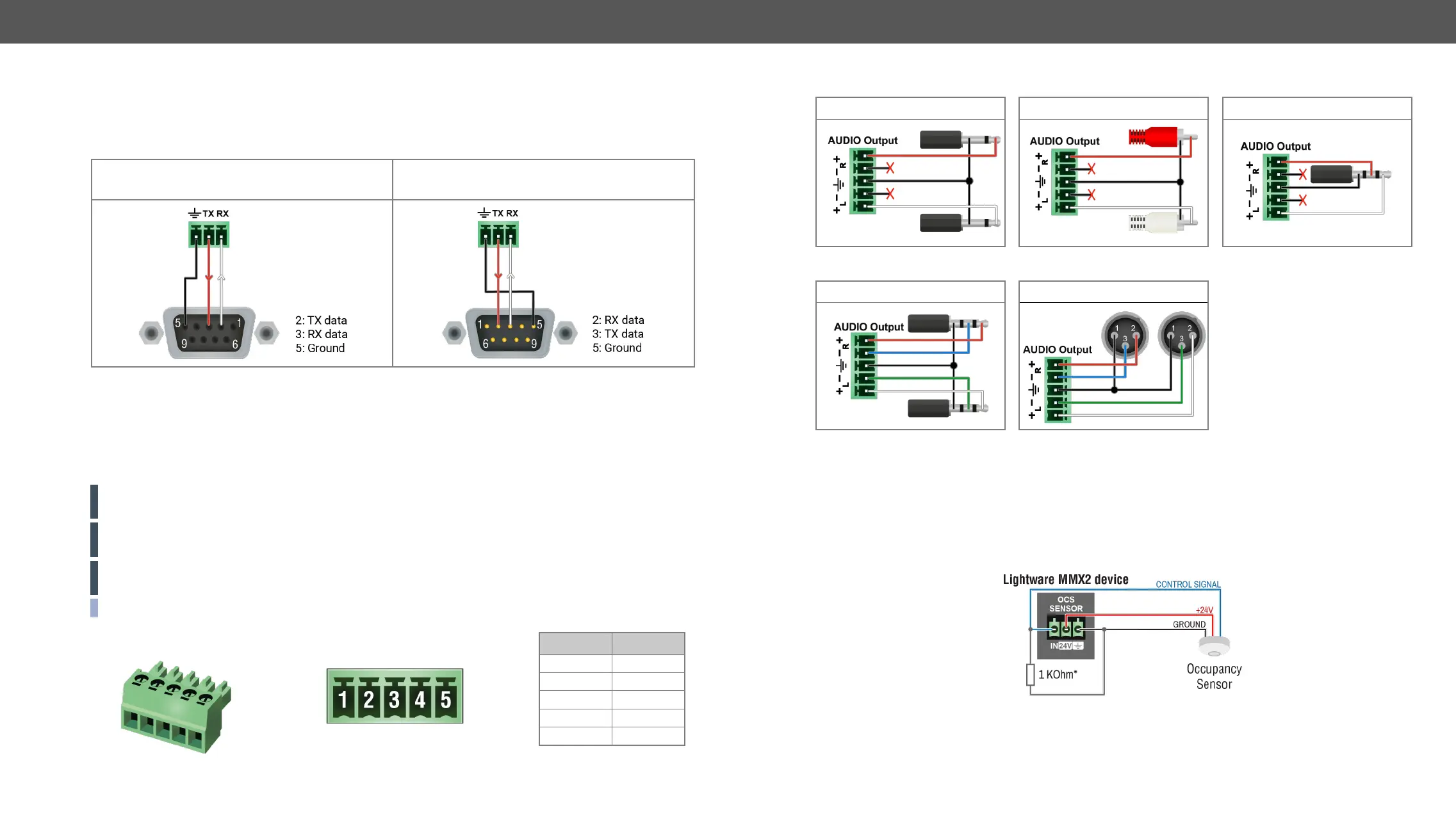11. Appendix MMX2 series – User's Manual 122
Cable Wiring Guide
Serial Ports
The device is built with 3-pole Phoenix connector. See the examples below of connecting to a DCE (Data
Circuit-terminating Equipment) or a DTE (Data Terminal Equipment) type device:
Lightware device and a DCE
D-SUB 9 and Phoenix
Lightware device and a DTE
D-SUB 9 and Phoenix
Audio Ports
Inputs and outputs of audio devices are symmetric or asymmetric. The main advantage of the symmetric
lines is the better protection against the noise, therefore they are widely used in the professional audio
industry. Symmetric audio is most often referred to as balanced audio, as opposed to asymmetric, which is
would like to help users assembling their own audio cables. See the most common cases below.
ATTENTION! Symmetric and asymmetric lines can be linked with passive accessories (e.g. special
cables), but in this case half of the line level is lost.
ATTENTION! There are numerous types of regularly used connector and cable types to connect audio
ATTENTION! Never join the phase-inverted (negative, cold or -) poles (either right and left) to the ground
or to each other on the output side, as this can damage the unit.
INFO: Use a galvanic isolation in case of a ground loop.
The Pinout of the 5-pole Phoenix Connector
Compatible Plug Type: Phoenix
®
Pin nr. Signal
1
2
3 Ground
Right-
Right+
From Balanced Output to Unbalanced Input
Phoenix - 2 x RCA
From Balanced Output to Balanced Input
Phoenix - 2 x XLR
OCS Sensor
The switcher is supplied with a 3.81mm 3-pole 90° Reversed Gender Plug Phoenix
®
connector, which is used
'active-high' type, thus the setup requires an external 1kR pull-down
resistor between the input and the ground pins. If your sensor is 'open drain' type, the grey-colored wire and
the resistor is not recommended to install.
* The extra wire and the resistor are recommended only for 'active high' type sensors.

